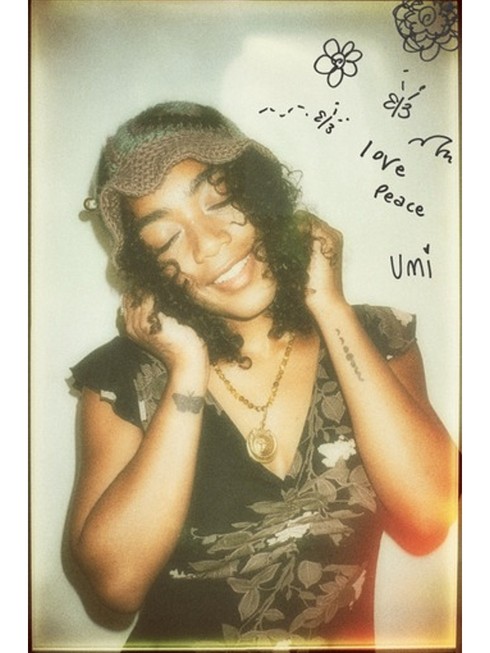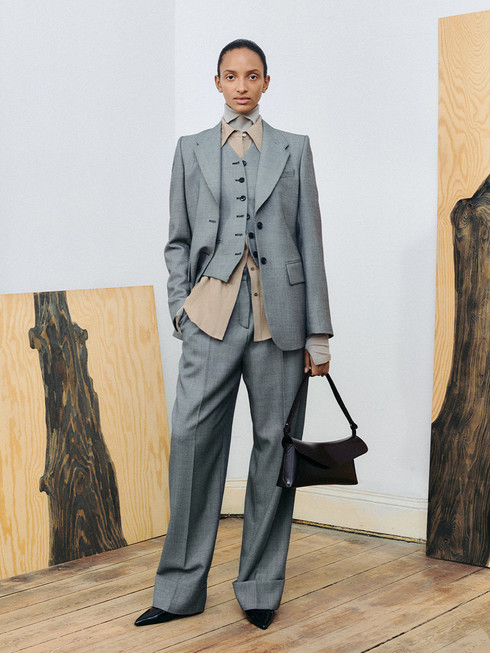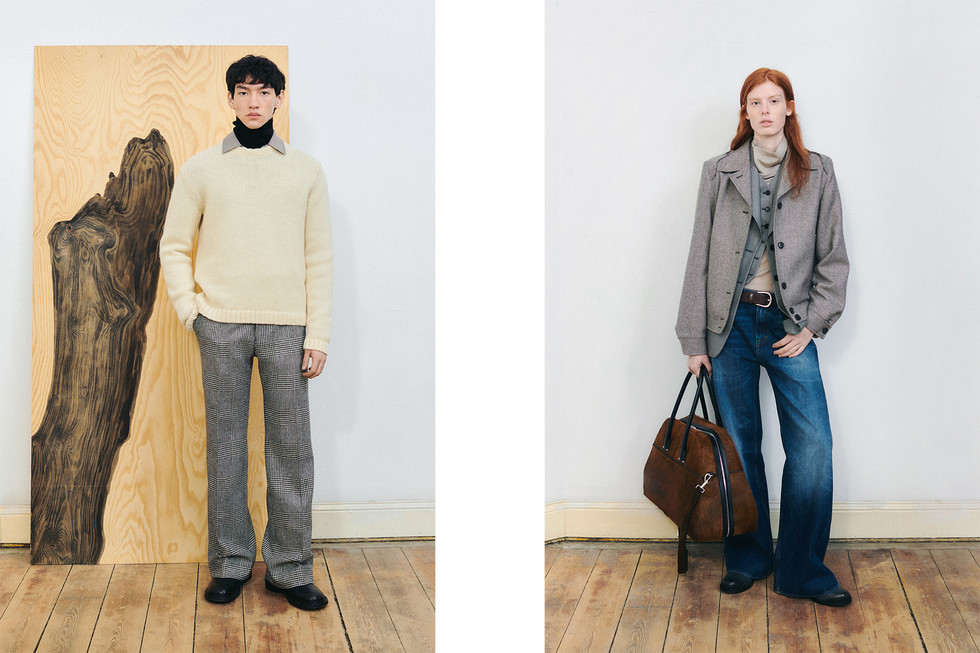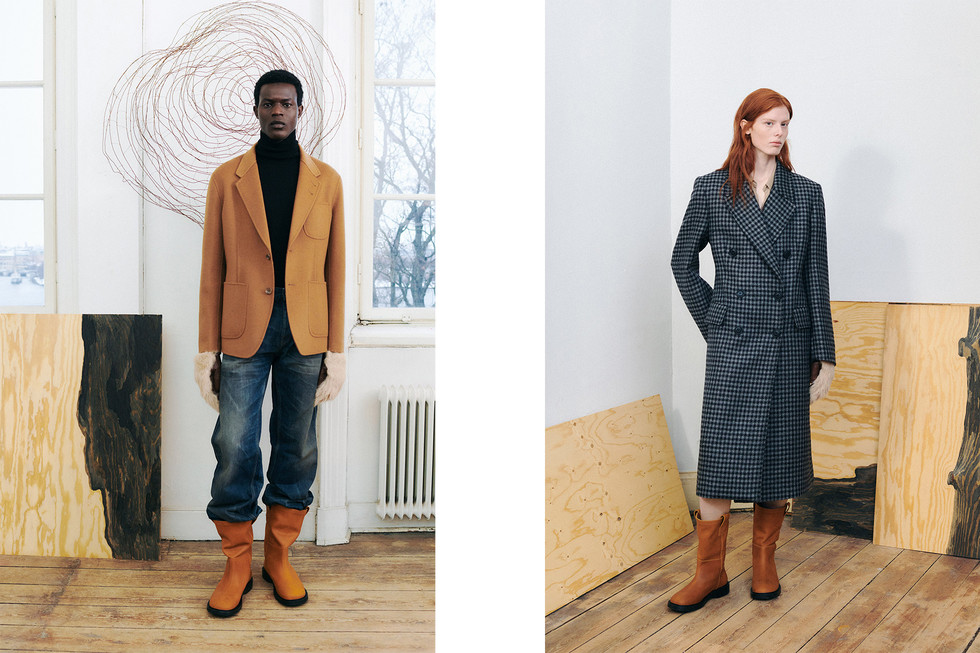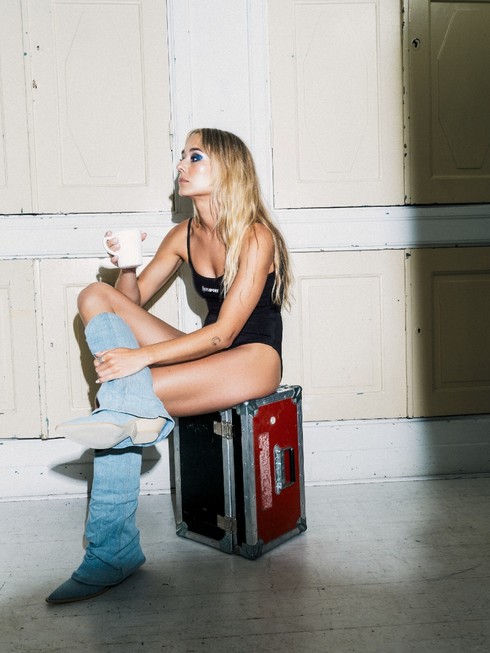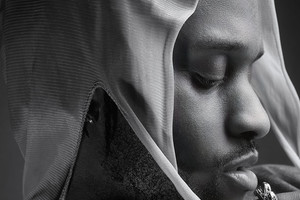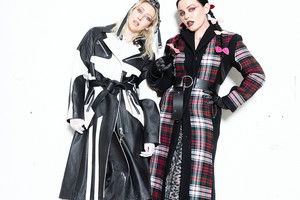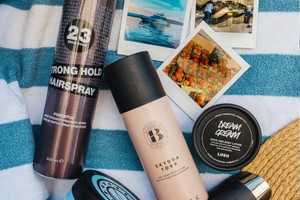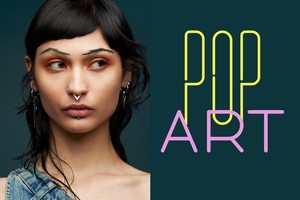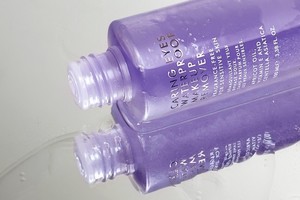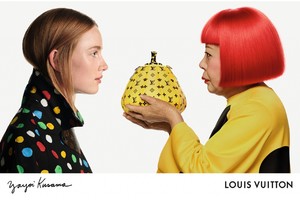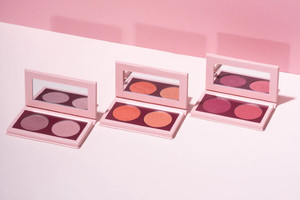Interview With The Musician UMI
Written by Wendy Bevan by Emelie BodénAs I waited for Umi to arrive at my home in Los Angeles I watched the skies, that had been a little heavy over the last days, darker clouds, heavy light, even some rain but still, golden outlines that held the clouds tightly, out of sight above us. The golden rays of the sun shone low, it was a classic Los Angeles afternoon.
Earlier that day, I’d listened to some of Umi’s music and was keen to meet this young artist who was bringing a ray of light to the contemporary R&B scene. It was no surprise to me that minutes before she arrived, a huge, brilliant rainbow had arched itself over the Hollywood Hills in the distance, boldly glowing with each of its seven vibrant colours across the Canyons.
A perfect entrance for Umi, the new musical artist and healer who loves life and feels guided by the elements.
Who is UMI?
Umi is a multidimensional artist and healer. Umi is a friend who understands you and seeks to understand you more. Umi loves life
Tell me about your inspiration behind your EP talking to the wind. You found the motivation to write this whilst meditating. How important is meditation in your songwriting and practising as a musician?
It's so important, in order to create music that is very authentic to me. It requires the outside noise, so you can create from your centre, versus the centre of others. So, every time I meditate I feel like all the extra clutter disappears and I get a clear inspiration of what I want to do and what I want to create. It's like the healer to writer's block, the healer to self doubt, the healer to confusion, it's like my important centre practice.
How long have you practised meditation?
Like 8 years now. I started when I went to college, right when I graduated high school. I had so much anxiety every day, and I got to this point when I thought ‘I cannot live my life like this.” I heard about meditation from my mom who practises Buddhism, so I knew about mediation from her but never really did it growing up. So I tried this ten minute meditation and I had never experienced that much peace and quiet in my mind before. I literally started crying after that. I didn’t know it was possible to have such an empty state, so after that I thought “whatever this is, I’m going to dedicate my life to learning more about it.”
So do you enjoy Buddhist wisdom?
Mmmm I do! I love it because it's very simple and it doesn’t demand anybody to believe it or to understand or believe; it's just ‘this is what’s been passed down- it just asks if it resonates with you.’ It's also very flexible, there’s many different types of Buddhism. The specific type my mom practices is from Japan, and it talks about the self as the universe and how we in ourselves are our own universe. There’s parts of it I resonate with and parts I don’t resonate with. I appreciate it because it's more of a teaching than a formed belief.
So, talking to the wind- what is the EP actually about?
The EP itself is an experience and a journey. The title talking to the wind is about how when I’m confused I’ll sit outside and let the wind and the elements guide me. I think that nature has a very simple way of speaking their words. It's just from the heart, it's very simple like “Just be, it's gonna be ok, trust.” It's very simple. So when I was making this project, I think I was learning about trust; how to trust myself, how to trust my journey. In each song, I remember a different aspect of my life I didn’t trust, so I wrote the song to help me learn to trust more. The whole project really is about trust, so I hope when people listen to it, it gives them the same feeling of meditation, being outside, and that by the end of listening to the project, some type of inspiration clarity will arise through you. That’s the intention behind it.
Vogue has quoted your r&b style as those spent at the beach and carefree summers in LA- how would you spend your perfect carefree summer?
Ohhhh I’d wake up whenever I want to wake up, I’d stretch, I’d eat some fruit, and then I would go to the beach with some friends, I’d jump in the water, do mediation, see my friends and listen to some music and let the wind take us from there….
How influential were the dreams you had as a child in your adult life?
I feel like they have been a direct translation in a way. Ever since I was little I always saw myself on stage. But when I was playing music pretending to have a show or pretending to record in the studio or pretending to write a song, I knew that that’s just what I enjoy and love doing. I’d dream about it…. So I feel like those dreams remind me that I’m doing exactly what I feel is my purpose and what I’m inspired to do. Why else would I want to do that when I was so little, when I had infinite other things to play with and do… it's cool, too, when I close my eyes I can still see the same dreams as I did when I was little. I can still see myself on stage, or being in the studio… all still on my mind, all stuck with me.
You embrace love, life but above all feel ok with being lost in the world. When you feel lost, what gives you comfort and what guides you through darker times towards your light?
That’s such a poetic question! I think back to all the other times I felt lost, and I was kind of okay in the end, and I think why would they be any different- some of those memories are comforting; I think friends and family are comforting. Hearing from outside of you that you’re going to be ok, sometimes you need that. Sometimes you need the outside to help grow the inside. So those two things help you.
How important are the elements in your work? Do you feel you are guided by the moon?
Yes!! I totally am. I’m learning to honour my cycle within the month like the moon. When the moon is full, it's my most energetic time, my most outward extroverted time, and when it's the new moon, I feel very to myself and like I want to be in a cave and write in my journal andcreate. By honouring how I feel, it allows me to go with the flow of creativity, whereas sometimes you need to document creativity and sometimes you need to go out and experience to go out and document in a way. So I think the elements are so important. They help me stay organic and natural. An important part of my art and music is, it's not manufactured art. I get it from inside myself first and I think when you look at the moon and you look at the trees, it’s like an inside out creation.
“why don't we go '' is the first track from the new EP. You wrote it whilst falling in love….. Can you describe why that person felt special to you and inspired you to write the song?
Ohhh! I just tweeted this tweet; saying it reminds me of falling in love and one of the lyrics is ‘When summer left you came’ and I feel like whenever Fall comes round, I always fall in love. Falling in love with something new, someone new, a new part of myself. I don’t know, it's like a very romantic period for me and so I wrote this reflecting back at the more fleeting relationships I had. So, ‘why don't we go’ is all about spontaneity and embracing spontaneity and being ok with not knowing what’s going to happen or what the plan is, but following your heart. I always fall in love with somebody when I do that, so that’s what I thought about when I wrote “why don't we go.” Also, what's cool about it is that I wrote most of the songs in London in the Fall time too, so it reminds me of Europe when I hear that song.
Where is your favourite place in the world?
My favourite place…. You know, the more nomadic I’ve become in my life, the more my favourite places are where my friends and family are. A couple of days ago I did this meditation show and all my friends, team and family came to support me and I thought “THIS! Is where I want to be in the world: this feeling.” So my favourite place is a feeling - it's that warmth.
If your music could change anything for your listeners, what would it be? Is it important to you that your music touches the soul?
I’ve never been asked this question before!! It's sooo nice. It's very important that my music touches the soul, I think it does. I think that's the difference that people feel when they hear my music; the thing that draws my fans back to my shows and back to me. If there’s one thing I could change for my fans, it would be the relationship with their emotions and them learning that it's ok for them to embrace their emotions.
What’s your desert island disk? Your one album you would play on your desert island?
D’angelo- Voodoo. It has range and it's so warm. I listen to that album like it's the only album I have on earth. It's a good one, it's great honestly.
Last question; perhaps a question that influences the whole of your universe…tell me a little bit about how you grew up?
I grew up in Seattle, which is rainy and gloomy a lot. I spent a lot of time outdoors and a lot of time indoors. Seattle is also super lushIt feels a little bit like an enchanted forest and I lived pretty deep in the forest versus the city, so I had a lot of childhood memories of bike riding through the forest and finding farms in the middle of the forest and sneaking into people's farms and running in the rain. I grew up with my mom and my dad; they divorced when I was pretty young so that was cool as I almost had two different experiences with my two parents. My mom is Japanese, so I went to Japanese School, watched Japanese TV, listened to Japanese Music, made Japanese friends and all that. Then when I was with my Dad, I was more with my African American family. I would spend weekends with him, we would go to the baptist church and I was in the children’s choir for most of my childhood. He would take me outside a lot to the park, and he was a DJ so he had racks of tapes he would put on. My Dad put me onto a lot of music when I was little. When my Dad wasn’t there, my grandma would take care of me, she would always take me to the library and we would read together a lot, that is a very vivid memory for me. I also grew up around music, so much music. First thing I’d listen to when I woke up; somebody was playing music in the house always. Yeah…I also have two little sisters. The twins. They are very important, also because when I was performing when I was little, my sister would stand and pretend to be my fans. We would play all-sorts of games together!! I was usually always the leader; teaching them songwriting, or math or something as the teacher! I played a lot in my childhood and I dreamed and imagined a lot. It does inform a lot about your universe, especially when it's phrased that way, it's like the memories you pull are different…that’s lovely
Link to album here!

